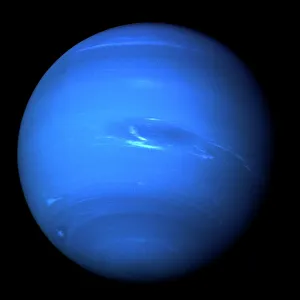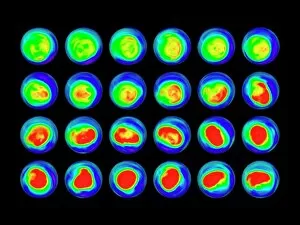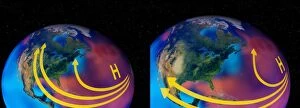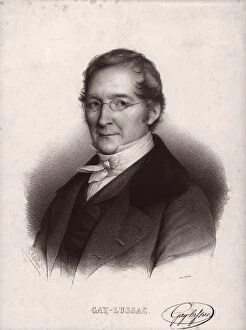Atmospheric Science Collection
Atmospheric science, the study of Earth's ever-changing atmosphere, unveils a captivating world filled with mysteries and wonders
For sale as Licensed Images
Choose your image, Select your licence and Download the media
Atmospheric science, the study of Earth's ever-changing atmosphere, unveils a captivating world filled with mysteries and wonders. Just like Neptune, the enigmatic blue giant in our solar system, atmospheric science delves into the depths of our own planet's celestial envelope. Voyager 2's mesmerizing image of Neptune serves as a reminder that there is still so much to explore and understand about this intricate realm. In 2004, water vapor maps of Antarctica provided invaluable insights into the delicate balance within our atmosphere. These maps shed light on how this remote icy continent influences global weather patterns and climate change. Looking back to history, we recall the Soviet Antarctic expedition of 1980 which contributed significantly to our knowledge of atmospheric dynamics in extreme environments. Their brave efforts paved the way for future research in understanding how these regions impact global weather systems. From ancient times to modern advancements, tools such as the 19th-century anemometer have allowed scientists to measure wind speed and direction - crucial elements in comprehending atmospheric behavior. Meanwhile, groundbreaking discoveries like Joseph Louis Gay-Lussac's investigations into gases laid foundations for understanding their role within our atmosphere. The significance of molecules cannot be overstated when discussing atmospheric science – from carbon dioxide (CO2) molecules influencing climate change to ozone (O3) molecules protecting us from harmful ultraviolet radiation. The delicate balance between these compounds shapes Earth's climate and health. Examining specific instances like the Dust Bowl drought explained by C016 /8123 model developed during the 1930s provides valuable lessons on human impacts on weather patterns through land use practices. Monitoring carbon dioxide levels across different regions such as Atlantic waters in 2003 or tracking global methane concentrations in 2004 allows scientists to assess changes over time. These measurements are vital for understanding how human activities affect greenhouse gas emissions and contribute to climate change challenges we face today.









